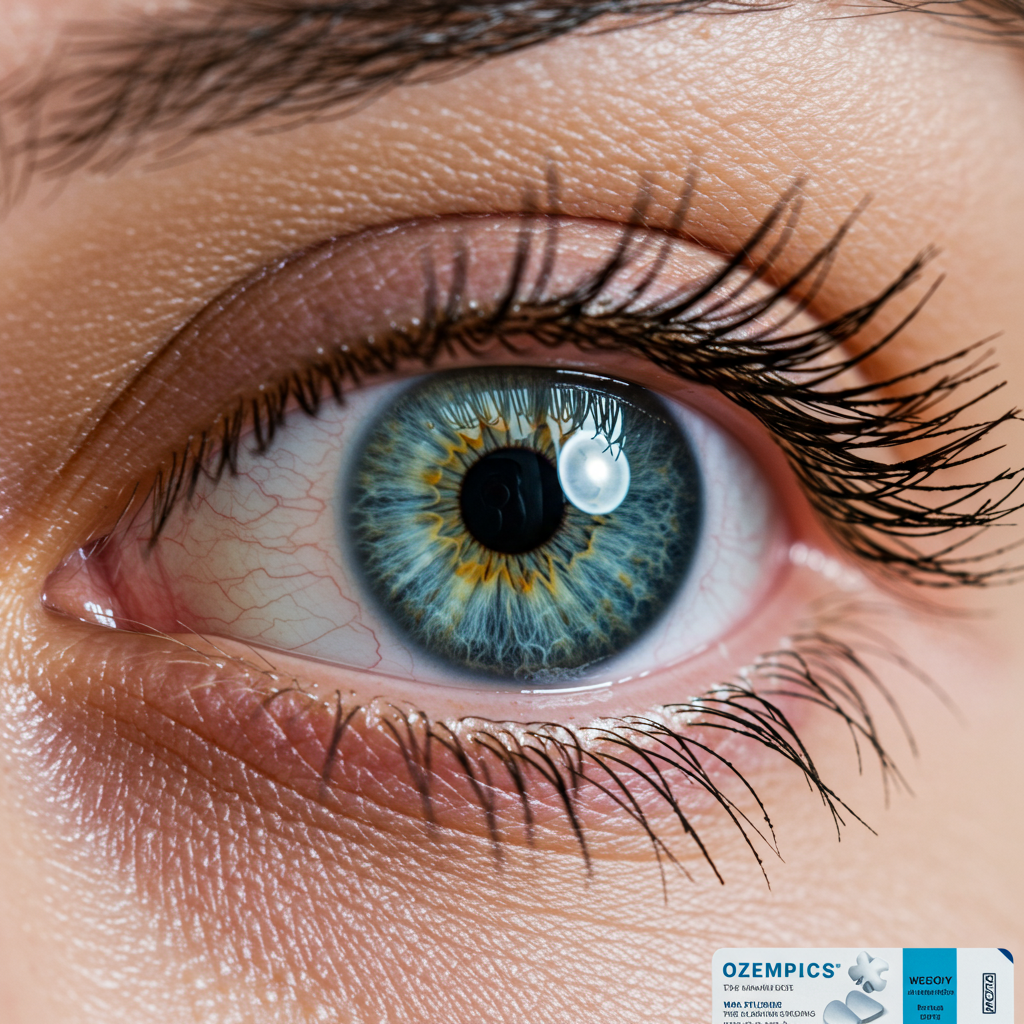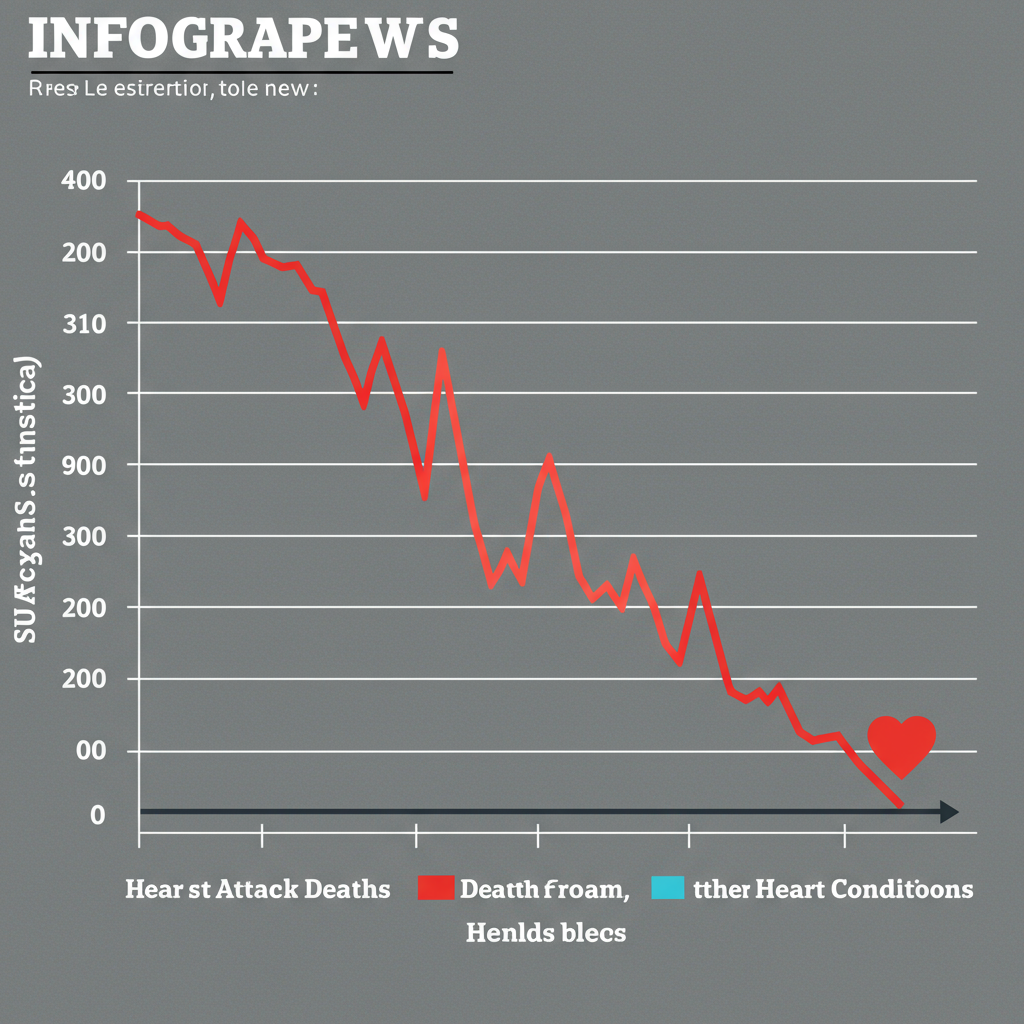The soaring popularity of weight loss drugs like Ozempic, Wegovy, Mounjaro, and Zepbound has transformed how we approach obesity and diabetes management. These GLP-1 receptor agonists (GLP-1 RAs) offer significant benefits, from substantial weight loss to improved cardiovascular and metabolic health. However, recent research has brought an important topic into focus: their potential, albeit rare, links to serious eye conditions. Understanding these emerging insights is crucial for both patients and healthcare providers to ensure informed decisions and proactive monitoring of eye health while on these life-changing medications.
The Ascent of GLP-1 Medications
GLP-1 receptor agonists, including active ingredients like semaglutide and tirzepatide, mimic a natural hormone that helps regulate blood sugar, slow stomach emptying, and reduce appetite. This mechanism has made them highly effective for managing type 2 diabetes and promoting weight loss, leading to widespread adoption. Patients often experience significant improvements in their overall health, including better blood sugar control, lower A1C levels, and reduced risks of heart attack and stroke. These comprehensive benefits underscore why these medications are considered so valuable in modern medicine.
Unveiling the Eye Connection: Key Conditions
While the overall safety profile of GLP-1s remains strong, several studies have explored their potential relationship with specific eye conditions. It’s important to note that the absolute risk of developing these conditions remains low for most individuals.
Non-Arteritic Anterior Ischemic Optic Neuropathy (NAION)
Often referred to as an “eye stroke,” Non-Arteritic Anterior Ischemic Optic Neuropathy (NAION) is a serious condition characterized by sudden, painless vision loss, typically in one eye. It results from a sudden reduction or blockage of blood flow to the optic nerve. Unfortunately, there is no known treatment for NAION, and the vision loss is often permanent, worsening over a few weeks before stabilizing.
Several studies have investigated a potential link between GLP-1 medications and NAION. Early findings, including some from 2024, suggested a heightened risk. For instance, some research indicated that diabetic patients on semaglutide might have a four-fold increased risk of NAION, with the risk rising to nearly eight times higher for those using it solely for weight loss. This led the European Medicines Agency to classify NAION as a “very rare” side effect, appearing in about 1 in 10,000 semaglutide users.
However, more recent, larger studies offer a nuanced perspective. One significant study, analyzing data from nearly 1.5 million people, found that among 159,000 individuals with type 2 diabetes taking semaglutide or tirzepatide, approximately 1 in 2,500 developed NAION over two years. While this represents a higher incidence than previously thought, the overall number of affected individuals remains small. Another large study did not find an increased risk of NAION among GLP-1 users, underscoring the mixed evidence and the need for further long-term research to fully understand this complex relationship.
Diabetic Retinopathy (DR)
Diabetic retinopathy is a common and serious complication of diabetes, where high blood sugar damages the delicate blood vessels in the retina, potentially leading to vision impairment or blindness. GLP-1 drugs, by rapidly lowering blood sugar, can paradoxically cause a temporary worsening of existing diabetic retinopathy, especially in the initial months of treatment. This is because rapid blood sugar stabilization can destabilize fragile retinal vessels, leading to bleeding or fluid leakage.
Despite this initial risk, comprehensive studies have presented a dual impact. Crucially, participants on GLP-1 medications in these studies experienced fewer vision-threatening complications from diabetic retinopathy and required less invasive eye treatments overall compared to those on other diabetes medications. This suggests that while careful monitoring is needed, the long-term benefits of GLP-1s in managing diabetes may ultimately contribute to better eye health outcomes for many individuals with DR.
Neovascular Age-Related Macular Degeneration (nAMD)
A newer area of concern involves neovascular age-related macular degeneration (nAMD), a potentially blinding eye disease. A recent study published in JAMA Ophthalmology indicated that older adults with diabetes taking GLP-1 medications might face a doubled risk of developing nAMD. This condition involves malformed blood vessels growing under the retina, which can leak fluid into the macula, leading to significant vision loss.
The study, which analyzed health records of over 139,000 Canadian residents, primarily those on Ozempic, found that the incidence of nAMD was approximately 2 in 1,000 among long-term GLP-1 users, compared to 1 in 1,000 among non-users. While still a very low absolute risk, this represents a significant relative increase. Researchers also observed a dose-response relationship, meaning the risk of nAMD increased with longer exposure to GLP-1 medications. This highlights the importance of long-term ocular safety investigations, especially given the chronic nature of these treatments.
Exploring Potential Mechanisms
The exact ways in which GLP-1 medications might influence eye health are still under investigation, and experts do not suspect direct harm to the eye. Several theories are being explored:
Rapid Blood Sugar Fluctuations: Significant and rapid drops in blood sugar, particularly at the start of treatment, might stress the optic nerve or destabilize existing fragile retinal vessels, potentially leading to issues like leakage or bleeding.
Pre-existing Conditions: Individuals prescribed GLP-1 drugs often have co-morbidities such as diabetes, high blood pressure, and obesity. These conditions are independent risk factors for various eye diseases, including NAION and nAMD. It’s challenging to isolate the drug’s effect from these underlying health issues.
Sympathetic Nervous System Activation: Some theories suggest GLP-1 drugs could activate the “fight-or-flight” response, potentially leading to a temporary narrowing of blood vessels and reduced blood flow to the optic nerve.
Who Is at Higher Risk?
While the overall risk of serious eye conditions from GLP-1s remains low, certain individuals may have pre-existing risk factors for conditions like NAION:
Diabetes: Poorly controlled diabetes is a major risk factor for many eye conditions.
High Blood Pressure: Hypertension can damage blood vessels throughout the body, including the eyes.
High Cholesterol: Contributes to cardiovascular issues that can impact blood flow.
Obstructive Sleep Apnea: Linked to NAION due to fluctuations in oxygen levels and blood pressure during sleep.
“Disk at Risk”: An anatomical feature where the optic nerve head is naturally crowded, making it more vulnerable to reduced blood flow.
- Previous NAION or Eye Surgery: Increases susceptibility.
- www.independent.co.uk
- theconversation.com
- ca.news.yahoo.com
- www.medicalnewstoday.com
- www.webmd.com
It’s vital for individuals with these risk factors to have thorough discussions with their healthcare providers before starting GLP-1 medications and to maintain diligent eye health monitoring throughout treatment.
Navigating Your Eye Health While on GLP-1s
For patients currently taking or considering weight loss drugs, vigilance and communication are key to proactive eye health management.
Crucial Discussions with Healthcare Providers
Always have an open conversation with your prescribing doctor about your full medical history, including any pre-existing eye conditions or risk factors. Discuss the potential benefits of GLP-1s versus any emerging concerns about eye health. Your doctor can help you weigh these factors based on your individual health profile.
Regular Comprehensive Eye Examinations
Leading eye care professionals recommend regular comprehensive eye examinations for all GLP-1 users, especially those with diabetes or other risk factors. Inform your optometrist or ophthalmologist about your medication use. These exams can help monitor for worsening diabetic retinopathy, detect early signs of NAION, or identify individuals with a “crowded optic nerve head.”
Immediate Medical Attention for Sudden Vision Changes
Any sudden, painless vision changes in one eye, blurry vision, dark spots, or difficulty seeing colors clearly should prompt immediate medical attention. While not always linked to GLP-1s, these symptoms could indicate a serious eye condition like NAION, where timely intervention might be crucial.
Importance of Managing Underlying Health Conditions
Continuing to aggressively manage underlying conditions such as high blood pressure, high cholesterol, and sleep apnea can also help mitigate the risk of eye complications. Improving cardiovascular health generally correlates with better ocular outcomes.
Balancing Benefits and Risks
It’s essential to maintain perspective. While research continues to uncover potential links between GLP-1 drugs and rare eye conditions, these medications offer profound and well-established cardiovascular, renal, and metabolic benefits that can significantly improve quality of life and longevity. For most individuals, the overall risk of developing severe eye problems from these medications is exceedingly low, especially when compared to the well-documented risks of uncontrolled diabetes and obesity. The current evidence suggests that for many, the benefits of taking these weight loss drugs far outweigh these rare ocular risks. Informed decision-making and identifying individual risk levels are paramount in tailoring the right treatment plan.
Frequently Asked Questions
What specific eye conditions are linked to weight loss drugs like Ozempic and Wegovy?
Recent studies suggest a potential, though rare, link between GLP-1 medications (like Ozempic and Wegovy) and Non-Arteritic Anterior Ischemic Optic Neuropathy (NAION), often called an “eye stroke,” which causes sudden vision loss. There’s also evidence of potential worsening of Diabetic Retinopathy (DR) initially due to rapid blood sugar drops, though GLP-1s may ultimately reduce overall sight-threatening DR complications. A new study also identified a doubled risk of neovascular Age-Related Macular Degeneration (nAMD) in older diabetic users.
If I’m taking a GLP-1 medication, what steps should I take to protect my eye health?
If you are taking GLP-1 medications, it’s crucial to inform your doctor and eye care professional about your medication use. Regular comprehensive eye examinations are highly recommended, especially if you have pre-existing diabetes or other risk factors for eye conditions. Promptly report any sudden vision changes, blurriness, or dark spots to your doctor, as immediate attention can be vital for certain serious conditions like NAION.
Should I be concerned about permanent vision loss from these medications given their benefits?
While research indicates a potential link between GLP-1 medications and rare but serious eye conditions like NAION and nAMD, the absolute risk of permanent vision loss for most individuals remains very low. Experts generally agree that the significant cardiovascular, metabolic, and weight loss benefits of these drugs often outweigh these rare ocular risks. Discuss your individual risk factors and the specific benefits of your medication with your healthcare provider to make an informed decision about your treatment plan.
The Path Forward: What Research Says
The medical community continues to conduct long-term studies to fully understand the effects of GLP-1 medications on eye health. Researchers advocate for ongoing surveillance and comprehensive monitoring of patients prescribed these drugs. This continuous research aims to clarify the precise mechanisms, refine risk assessments, and ensure that these powerful medications can be used as safely and effectively as possible for the millions who benefit from them.
Ultimately, your health journey is a partnership with your medical team. By staying informed, having open conversations with your doctor, and prioritizing regular eye care, you can confidently navigate the use of these transformative weight loss drugs while safeguarding your vision.



